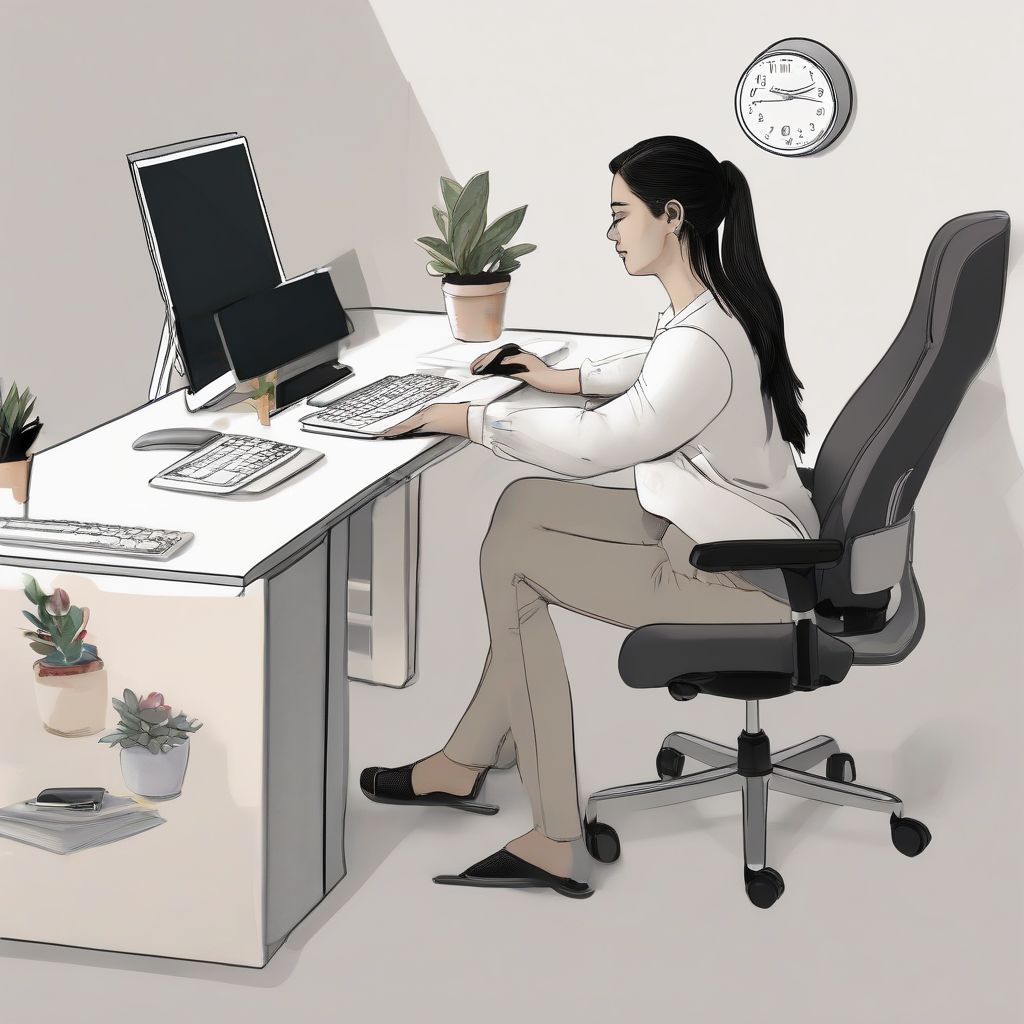Have you ever gotten to the end of your workday feeling stiff, sore, and completely drained? You’re not alone. Many people experience discomfort and reduced productivity due to poorly designed workspaces. The good news is, transforming your workspace for optimal comfort isn’t as daunting as it might seem. With a few simple adjustments, you can create an environment that supports your well-being and helps you power through your day feeling energized and focused.
As a nutritionist and meal prep coach, I understand the importance of prioritizing your health. Just as you carefully select nourishing foods to fuel your body, it’s essential to create a workspace that supports your physical and mental well-being. Let’s dive into how you can transform your work environment for the better.
Ergonomics: The Foundation of a Comfortable Workspace
Ergonomics focuses on designing and arranging your workspace to optimize your comfort and efficiency. Here’s how to apply ergonomic principles to your own setup:
1. Choose the Right Chair
You probably spend hours each day sitting at your desk, so your chair is the most critical piece of furniture to consider.
- Adjustability is Key: Look for a chair with adjustable height, so your feet are flat on the floor and your thighs are parallel to the ground. Adjustable armrests are also important to support your arms and shoulders.
- Lumbar Support: The best chairs offer adjustable lumbar support to cradle the natural curve of your lower back, preventing slouching and pain.
- Material Matters: A breathable material like mesh will keep you cool and comfortable throughout the day.
2. Position Your Monitor Properly
Eye strain and headaches are common complaints when your monitor isn’t positioned correctly.
- Maintain Distance: Your monitor should be an arm’s length away from your face.
- Eye Level: The top of your screen should be at or slightly below eye level so you’re looking slightly downward, reducing strain on your neck.
- Reduce Glare: Adjust your monitor’s brightness and consider using an anti-glare screen protector, especially if you’re near a window.
3. Optimize Your Keyboard and Mouse Setup
Repetitive motions with your hands and wrists can lead to discomfort and even carpal tunnel syndrome. Here’s how to prevent that:
- Keyboard Placement: Your keyboard should be directly in front of you, close enough to reach comfortably without straining.
- Neutral Wrists: Use an ergonomic keyboard or a wrist rest to maintain a neutral wrist position while you type. This means your wrists should be straight, not bent upwards or downwards.
- Mouse Ergonomics: Opt for a vertical mouse or an ergonomic mouse designed to keep your wrist in a neutral position.
 Ergonomic Workspace Setup
Ergonomic Workspace Setup
Beyond Ergonomics: Creating a Workspace That Supports Well-being
While ergonomics forms the foundation, there’s more to a truly comfortable and healthy workspace.
4. Light Up Your Space
Natural light is best, so position your desk near a window if possible. If natural light is limited, invest in a desk lamp that provides adequate illumination without harsh glare.
5. Take Control of Your Climate
Being too hot or too cold can make it difficult to focus and impact your comfort level. Adjust your thermostat or use a personal fan or heater to create a comfortable temperature.
6. Introduce Greenery
Adding a few plants to your workspace not only adds a touch of life to your surroundings, but studies have shown that plants can reduce stress, boost creativity, and improve air quality.
7. Minimize Clutter and Chaos
A cluttered workspace can lead to a cluttered mind. Take some time to tidy up, organize your belongings, and create a calm and inviting atmosphere.
The Power of Movement Breaks
Even with the most ergonomic setup, it’s crucial to incorporate movement breaks throughout your day. Sitting for prolonged periods can increase your risk of health problems and lead to stiffness.
- Set Reminders: Use your phone or computer to remind yourself to get up and move every 30-60 minutes.
- Simple Stretches: Incorporate some gentle stretches for your neck, shoulders, back, and legs during your breaks.
- Walking Meetings: If possible, take your phone calls or virtual meetings while standing up or walking around.
Listen to Your Body
Pay attention to any signs of discomfort or pain you experience while working. Ignoring these signals can lead to more significant problems down the road. If you experience persistent discomfort, consult with an ergonomist or healthcare professional for personalized advice.
Conclusion
Creating a comfortable and ergonomic workspace is an investment in your health, well-being, and productivity. By following these tips and making gradual changes to your environment, you can transform your workspace into a place where you can thrive both physically and mentally.
Remember, small adjustments can make a big difference. Start today and experience the positive impact of a workspace designed with your comfort in mind! Now, tell me, what’s one change you’re excited to make to your own workspace? Share your thoughts in the comments below!
[amazon bestseller=”ergonomic office chair”]
